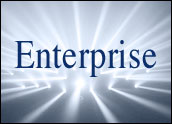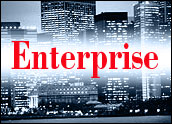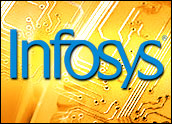
The Enterprise 2.0 Global Delivery Model Transformation, Part 2
There are six global delivery model parameters that will undergo change in order to support Enterprise 2.0: processes; technology; infrastructure; resources; communication channels; and business models.
We’ll discuss resources, communication channels and business models in this third installment of our three-part series.
4. Resources
Three key aspects of the resourcing paradigm will undergo a change with E2.0: resource geographic spread; team constitution; and skillsets required. With the availability of collaboration media and their ease of access, customer groups and IT support/delivery groups will operate out of their own locations without the need to work in a centralized fashion.
Sales teams will collaborate on platforms such as MS Sharepoint, or through communities powered by social media platforms such as Lithium, Jive, etc., to come up with customer proposals without having face-to-face discussions. Customer support staff will address customer queries via chats and blogs, reducing the need for call center agents to handle such requests over the telephone.
The use of multiple technologies and applications will require IT implementation teams to include resources from multiple vendor teams. Project managerial responsibilities will then span across these diverse teams. Agreeing on unified quality processes and aligning the teams to follow them will become0eph a daunting task.
GDM 1.0
GDM 2.0
Resource Presence
Centralized teams
Ease of resource monitoring
Multi-site teams / resources
New resource monitoring mechanisms required
Team Constitution
Few vendors
Easy to enforce resource related policies
Large teams
Multiple vendors
Need to widen scope and reach of resource related policies
Smaller, agile teams
Resource Skills
Programming languages like Java, .NET, C++
Application packages
Open source technologies
Familiarity with cloud computing
Configuring blogs, wikis, widgets
In addition to package application and application programming skills, a strong emphasis will be placed on the familiarity of resources with emerging technologies such as cloud computing; collaboration tools such wikis and blogs; open source software; and integration capabilities. However, in a market where technology is changing rapidly and the applicability of available technologies is varying, it will be quite a challenge for HR organizations to identify what is the exact skillsets they need. What compounds this difficulty is the fact that there is only a limited understanding within organizations of the capabilities and applicability of Web 2.0 technologies.
Hiring methodologies will also undergo change in the 2.0 era. Instead of being limited to face-face meetings or formal telephonic/email exchanges, employers will be able to solicit prospective employees over professional networks such as LinkedIn. They’ll be able to use collaborative, content-sharing platforms to meet and assess candidates. Job-profile matching portals will become more of a norm for both employers and prospective employees, and they will be enhanced by social media features such as tagging and posting, used both to rate employers/employees and maintain connectivity.
5. Communication Channels
E2.0 will reap benefits of the various channels that are available, especially over the Web as compared to traditional wireline/wireless communication mechanisms. Communication channels basically improve productivity. The difference that the E2.0 era has brought about is increasing the ability to listen and collaborate, helping to speed innovation cycles, enable faster resolutions to any issues, and broaden the availability of knowledge.
If GDM 1.0 was empowered by a robust telecommunication infrastructure, GDM 2.0 will move away from it. Stakeholders at various locations on the globe would prefer to converse, co-create and support each other using the myriad collaboration and networking tools available today than to pick up a phone and join a conference bridge! Customer support representatives will deliver quicker responses to customer issues using blogs, Twitter, etc., instead of making them wait in long queues on the switchboard.
With disparate teams in various geographic locations, enterprises will find it increasingly difficult, and in fact costlier, to connect them using traditional communication infrastructure. They’ll resort to using collaborative mechanisms now available thanks to various Web 2.0 — features such as wikis, blogs, content-sharing sites, collaborative tools such as SharePoint, Twitter, Skype, etc.
Instead of emphasizing face-to-face discussions, E2.0 will be all about conversing and collaborating in real-time or otherwise using these social media. Options such as Cisco’s Unified Communications Manager, which integrate telephony with content sharing and social media connectivity, will be the preferred choices for connecting teams around the world.
6. Business Models
E2.0 will deal with different process, technology, infrastructure, resource and communication paradigms than enterprises running their IT operations using GDM 1.0. Currently, there are time-tested, standard business models for delivering applications in an on-premises mode. Business models have been identified and are being employed for the on-demand option, and new business models are evolving to handle the cloud delivery mechanism.
However, it’s unlikely enterprises will stick to just one of these options. In fact, they will try to reap the benefits of each of these models: the reliability and reach of the on-premises option; the need-based availability and usage-based pricing of the on-demand option; and the tremendous infrastructure and processing capabilities that the cloud option provides. There will probably be an evolution of hybrid models in order to allow E2.0 to reap the best of all three.
The manifestation of the new business models will be observed among the four typical components: project models, resourcing models, infrastructure models and pricing models.
Vendors Landscape
From an industry ecosystem standpoint, we’ll observe new vendors providing solutions in the following areas:
- Communication/collaboration tools (e.g., social platform vendors such as Lithium, Jive, etc.)
- Infrastructure (players like Amazon that have strong Web-based storage and computing capabilities; package vendors like Salesforce.com)
This is not to say that the current technology vendors and system integrators will become obsolete. Given their knowledge and experience with the GDM, they’d be able to align to GDM 2.0 provided they catch upon the new technologies and working models fast.
A good example is IBM, which has been a leading infrastructure vendor supporting GDM implementations for more than two decades and will continue to lead with a cloud computing offering as well. However, there will be new entrants — niche players mostly — that will claim a portion of the overall GDM pie.
Social Media Drawbacks
When all is said and done, there are also some drawbacks in the way social media can be used in this context:
- Excessive usage of social media tools can create application silos.
- Inappropriate usage of the available social media tools — integrated with existing applications OR available as built-in tool extensions — can result in unnecessary massive data collected within the enterprise.
- There may be overlapping of resource time and talent, OR resultant additional resource requirements for the various activities/updates that social media channels need.
- Lack of proper “education” of the relevant audience on E2.0 tools/social media can result in inappropriate messages/communications to the customer.
In Conclusion
This model is just a stepping stone toward a more agile and faster delivery model. There are more frameworks and models that will add more value and provide the right direction to businesses across the world, irrespective of their nature.
Our attempt here is to introduce some possibilities and elicit a few thoughts that can act as a basis for adoption of social media on the IT delivery side in this new E2.0 era.














































Social CRM
See all Social CRM